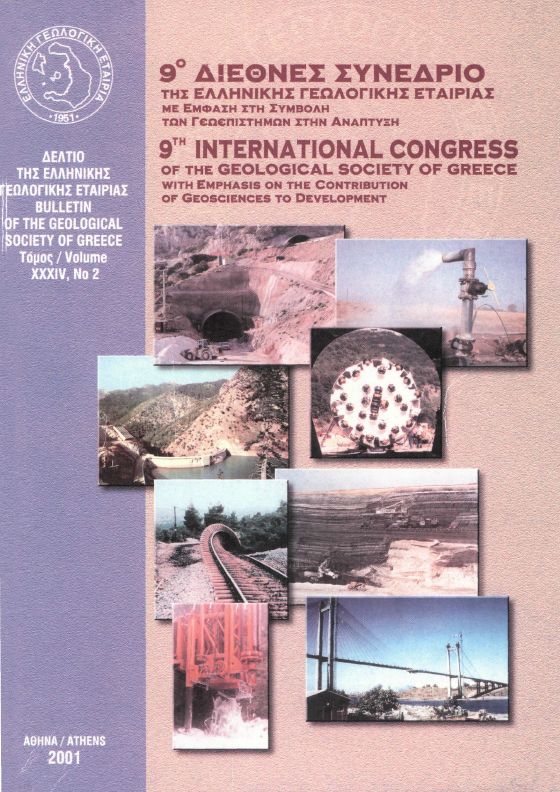THE OCCURRENCE OF THE METAXYTHERIUM CUVIERI CHRISTOL IN THE LATE MIOCENE SEDIMENTS OF SITIA, CRETE
Abstract
Two Sirenian skulls with their upper jaws coming from the Upper Miocene area of the village Achladia determined as Metaxytherium cuvieri Christol have been studied. This species is known up today from the M. Miocene of France (Cottreau, 1928). One skull of Metaxytherium cuvieri Chritol is found at the locality «Tympana» of Achladia village, within the formation of marls- gray marls, at an height of 170 m ca., while the second one is found in the locality «Kefala» of Achladia village within the formation of the gray marls at an altitude of 196 m c a . Metaxytherium cuvieri Christol is an intermediate type between Dugongs and Recent Lamantins (=Manatees). The occurrence of Metaxytherium cuvieri Christol in the Hellenic area contributes to our knowledge of its geographical and stratigraphical distribution in this eastern region of the Mediterranean basin during the Upper Miocene
Article Details
- How to Cite
-
Μαρκοπούλου-Διακαντώνη Α., & Λόγος Ε. (2018). THE OCCURRENCE OF THE METAXYTHERIUM CUVIERI CHRISTOL IN THE LATE MIOCENE SEDIMENTS OF SITIA, CRETE. Bulletin of the Geological Society of Greece, 36(2), 764–771. https://doi.org/10.12681/bgsg.16808
- Section
- Paleontology

This work is licensed under a Creative Commons Attribution-NonCommercial 4.0 International License.
Authors who publish with this journal agree to the following terms:
Authors retain copyright and grant the journal right of first publication with the work simultaneously licensed under a Creative Commons Attribution Non-Commercial License that allows others to share the work with an acknowledgement of the work's authorship and initial publication in this journal.
Authors are able to enter into separate, additional contractual arrangements for the non-exclusive distribution of the journal's published version of the work (e.g. post it to an institutional repository or publish it in a book), with an acknowledgement of its initial publication in this journal. Authors are permitted and encouraged to post their work online (preferably in institutional repositories or on their website) prior to and during the submission process, as it can lead to productive exchanges, as well as earlier and greater citation of published work.




